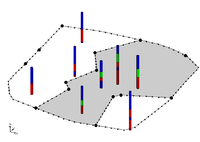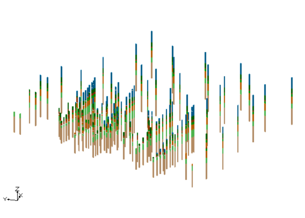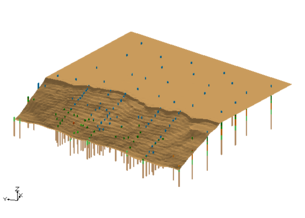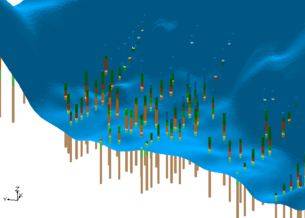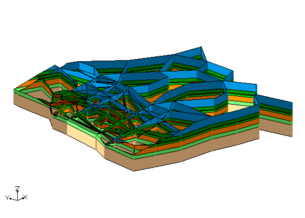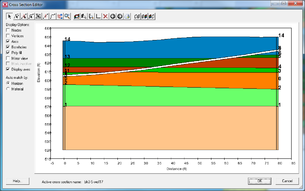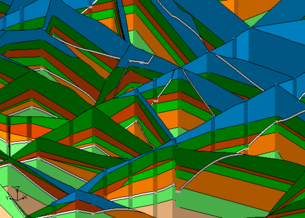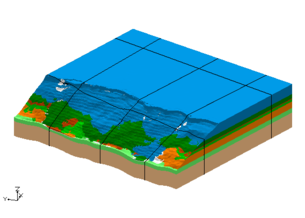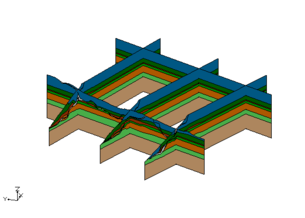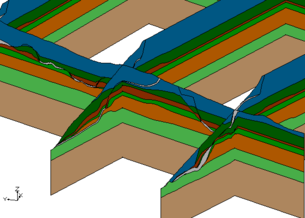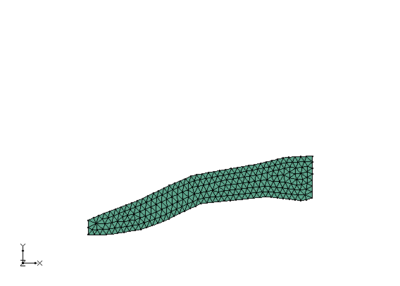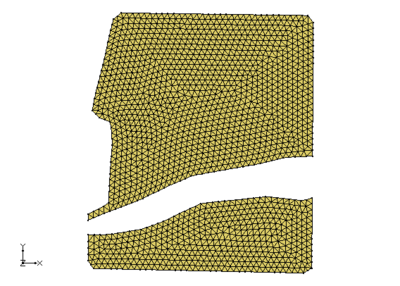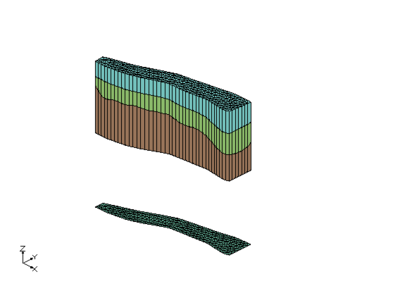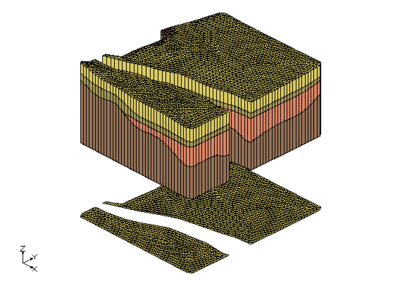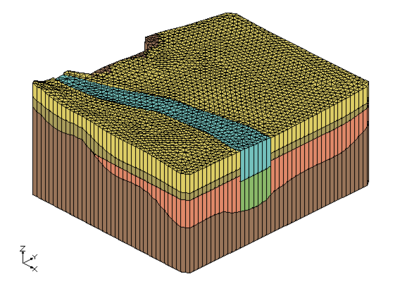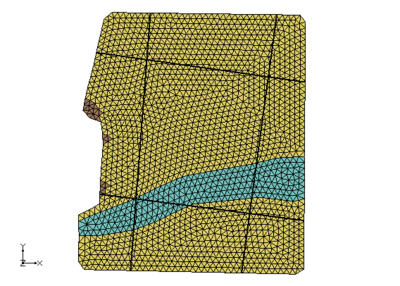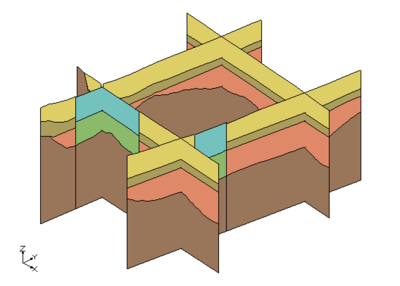|
|
| (One intermediate revision by the same user not shown) |
| Line 4: |
Line 4: |
| == Modeling a Slope Failure == | | == Modeling a Slope Failure == |
| In this example a combination of boreholes, user-defined cross sections, and TINs were used to create solids at a site with a slope failure. | | In this example a combination of boreholes, user-defined cross sections, and TINs were used to create solids at a site with a slope failure. |
| <gallery widths="300 px" heights="220 px"> | | <gallery widths="305 px" heights="220 px"> |
| Image:SlopeXsectBore.png|Borehole data | | Image:SlopeXsectBore.png|Borehole data |
| Image:SlopeXsectTop.png|Surface elevations | | Image:SlopeXsectTop.png|Surface elevations |
| Line 24: |
Line 24: |
| === Primary TINs === | | === Primary TINs === |
| To create solids that would match this cross section, create two different primary tins and executed the '''Horizons→Solids''' command for each primary TIN. The first TIN covered the area of the river and the second TIN covered the remainder of the study area as show in the images below. | | To create solids that would match this cross section, create two different primary tins and executed the '''Horizons→Solids''' command for each primary TIN. The first TIN covered the area of the river and the second TIN covered the remainder of the study area as show in the images below. |
| {|
| | |
| |[[Image:Tin1.png|400px|border]]
| | <gallery widths="400 px" heights="290 px"> |
| |[[Image:Tin2.png|400px|border]]
| | Image:Tin1.png| |
| |}
| | Image:Tin2.png| |
| | </gallery> |
|
| |
|
| === Solids === | | === Solids === |
The horizons method has been applied at a variety of sites to construct solid models of the subsurface. This page highlights example applications of the Horizons Method.
Modeling a Slope Failure
In this example a combination of boreholes, user-defined cross sections, and TINs were used to create solids at a site with a slope failure.
User defined cross sections
Zoomed in on cross sections
Solids created from user data
Cross sections from solids
Zoomed in on cross sections
Vertical Boundary Between Solids
In this application, the project required creating a set of solids where there would be distinct materials below a river bed compared to the other materials in the study area. The following cross section shows what a project wanted to create.
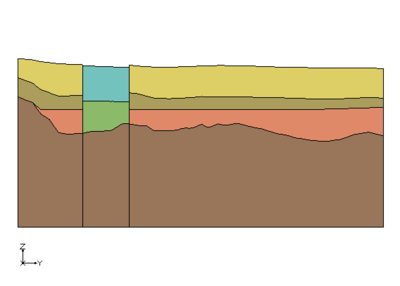
Primary TINs
To create solids that would match this cross section, create two different primary tins and executed the Horizons→Solids command for each primary TIN. The first TIN covered the area of the river and the second TIN covered the remainder of the study area as show in the images below.
Solids
There are now TINs that defined the top elevations of the horizon surfaces. There were three TINs used in the area around the river and there were four TINs used the remainder of the study area. Solids were created for the river area using the first TIN as the primary TIN. Solids were also created in remainder of the study area by using the second TIN as the primary TIN. Notice the the bottom most material matches in both sets of solids. This is because the same TIN with that horizon was used when creating both sets of solids.
Cross Sections from Solids
These images show the solids together and cross section cut through the solids. Again notice how the bottom most material matches across both sets of solids.
